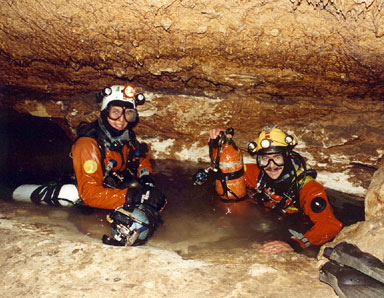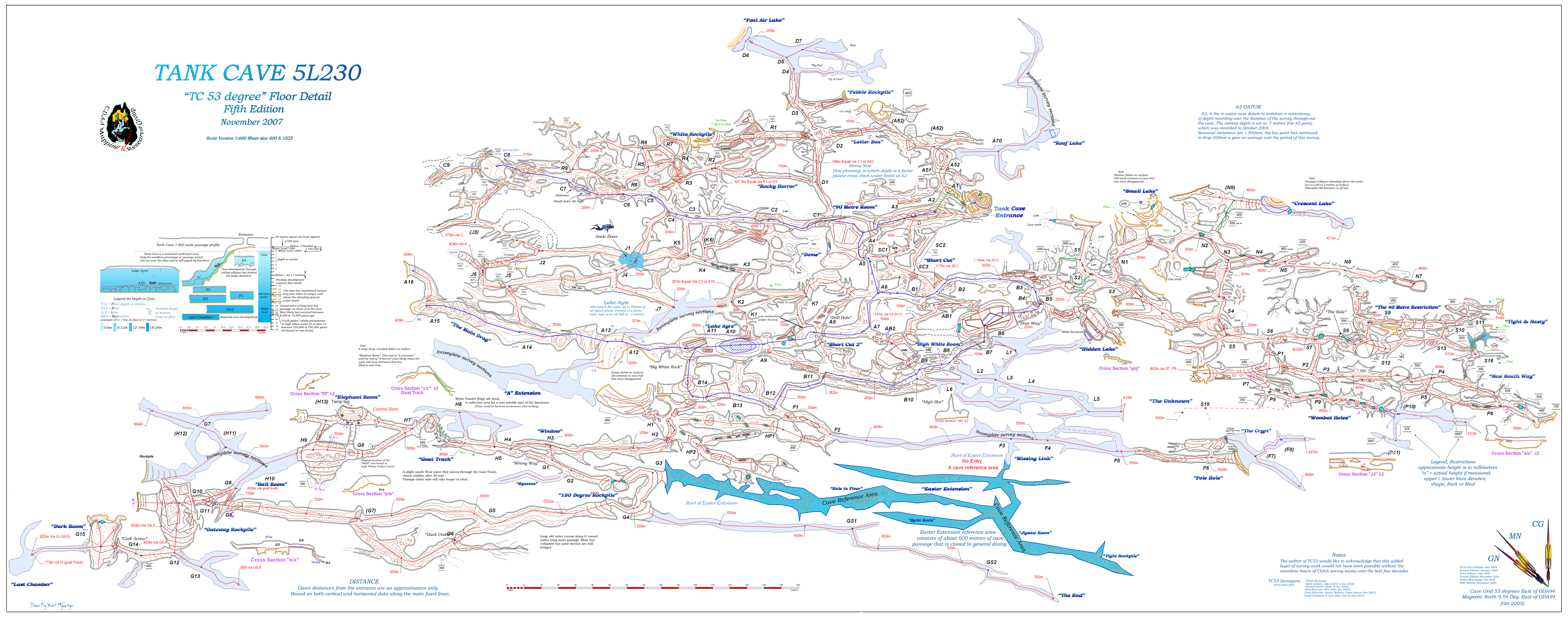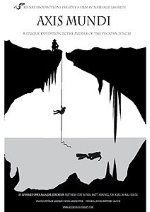| Tank Cave ... the exploration continues |
 |
| Written by Tony Richardson |
|
Reprinted from CDAA Guidelines Magazine - September, 1994
In the last year, since access has been regained into Tank Cave, the known length of the system has been increased due to two major discoveries. In June last, Greg Bulling and Tony Carlisle pushed through a restriction and discovered a wide, low, silty tunnel system heading south. This was progressively explored and mapped to add more than 700m of passage with the furthest point over 500m from the entrance. This discovery was significant on three counts. Firstly, it broke through a line where all other known passages had stopped. Secondly, the tunnels in this section run almost due south whereas most other known tunnels in Tank Cave run on the typical NW-SE bearing for Mount Gambier caves. Finally, this section led to the finding of the first accessible air chamber in the cave by Ron Allum in February, although the chamber is reported as being low with a thick mud slope leading to the roof. The second major discovery occurred on Good Friday this year when Greg Bulling and Tony Richardson, on a "warm-up dive" in a different section of the cave to that described above, managed to negotiate their way over a rockpile at the 480m mark. This led to the discovery of a large keyhole shaped passage which was dived to 580m. Returning that afternoon armed with a fully loaded reel and a 50 c.f. stage bottle each, the divers explored to 730m. Another rockpile had been discovered at 630m followed by smaller passage before again dropping into large keyhole passage. This terminated in a low room filled with clay blocks quite unlike others found in Tank Cave or Iddlebiddy -these being much smaller with sharper edges. This room was named the "Jigsaw Room". Shining lights across the azure blue water gave the appearance of more passage leading off across the room. After two long dives and a total distance swum of close to 3km, a rest day was called for. The plan for Easter Sunday was to use 88 c.f. stages and lay another reel of line through the Jigsaw Room and beyond. The stage bottles were dropped at the 400m mark and with well-pumped tanks, the two divers arrived at the Jigsaw Room with ample air. Line was laid across the Jigsaw Room and up a new tunnel which appeared to be closing down when the dive .was turned at the 850m mark due to an empty exploration reel. A smaller tunnel off the Jigsaw Room was explored for 50m with a safety reel on the return. The maximum depth of 18m combined with the long duration, caused the Aladin Pros to click into decompression mode on the return journey but still 600m from home. The last 20 minutes of this 130 minute dive passed quickly as the dive was discussed in detail on slates while decompressing in the entrance restriction. This discovery naturally caused a great deal of excitement as it is not every weekend that over 400m of new cave is explored. When this Easter Extension was drawn up on the map it was found to run parallel to the .previous longest tunnel, the 560m tunnel. This tunnel has been found and mapped in earlier explorations by Paul Arbon, Chris Brown, and Phil Prust. A connection between the two was a possibility.
Returning a few weeks later on the Anzac long weekend, two further exploration dives were again made by Greg Bulling and Tony Richardson. On the first, diving in another area of the Jigsaw Room led to a new 125m tunnel running between the Easter Extension and the 560m tunnel and terminating at 860m. Checking out some possible leads off the early part of this new tunnel became the objective for the second dive. The first lead to be checked was heading towards the 560m tunnel but was wide, low, and silty. One diver proceeded in carefully for about 20m. The tunnel gave no indication of getting any bigger but, just at the point of turning, marks were noticed on the clay floor - evidence of a previous dive from a different direction. Continuing on for another 5m and the 560m line was reached. The connection had been made and Tank Cave had revealed another of her secrets. Interestingly nearly all the exploration diving described above in both the South Section and Easter Extension has been done with side mounted cylinders. Other divers have since dived most of the new cave with back mounts but side mounts made it easier initially for the exploration divers to find the way through into new tunnels. Diving in the Eastern Extension requires stage bottles to be carried for part of the dive. The additional redundancy from having three tanks each in the cave means that these dives are now considerably safer - a loss of an air supply is equal to losing a maximum of one third of your total air supply rather than one half as with twin tanks. Decompression in the entrance restriction is not a problem as there is room for two divers with stage bottles and still a wide path for other divers to enter or leave the cave. Tank Cave is now the most extensive underwater cave system in Australia with close to six kilometres of mapped passage. On a world scale it is harder to ascertain, but from all accounts it would rate about sixth. |


